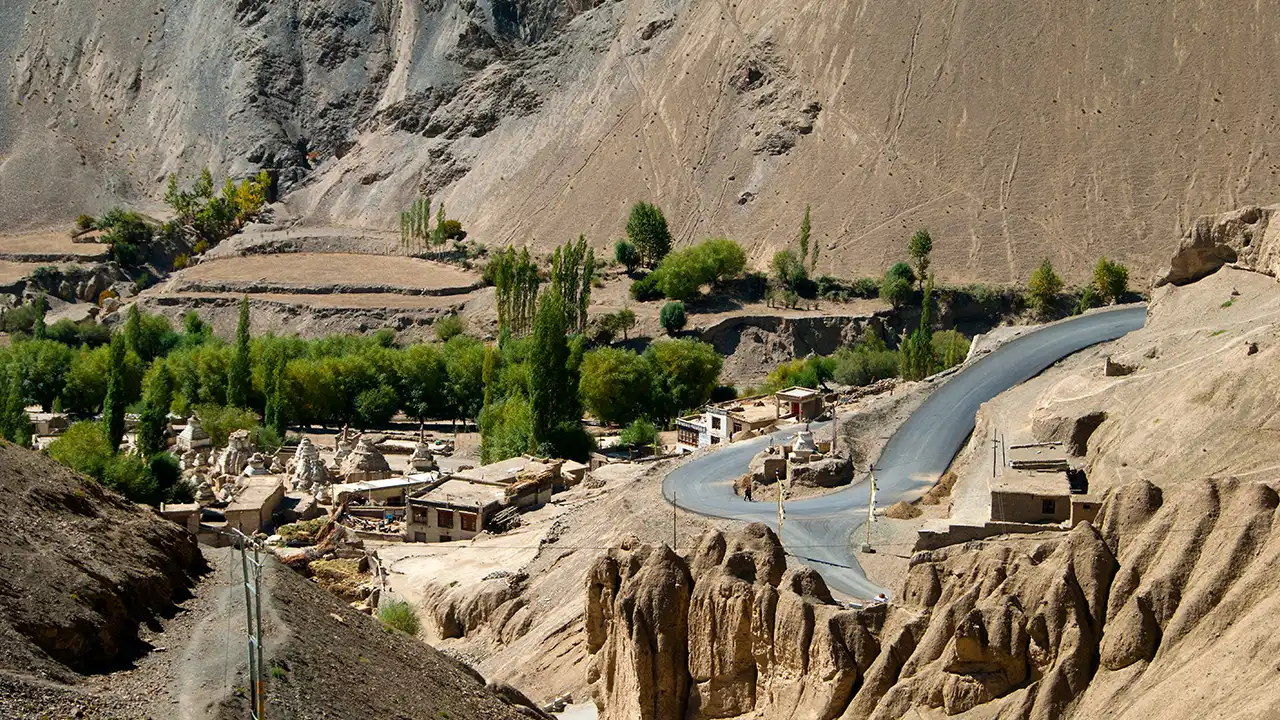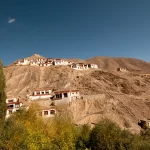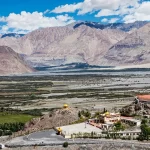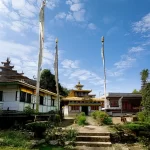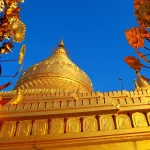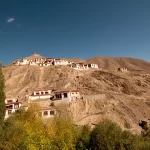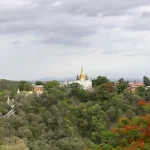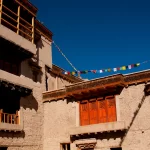Perched high in the Himalayas of Himachal Pradesh’s Spiti Valley, amidst wasteland and snow-capped mountains, stands the Tabo Monastery, a site commonly referred to as the Ajanta of the Himalayas. Unlike the glittering temples of modern Buddhist centers, Tabo is humble in appearance, yet it radiates a powerful sense of timelessness and sanctity. Founded over a millennium ago, this ancient monastery has survived harsh weather, political upheavals, and the erosion of time—standing today not only as a center of Buddhist learning but also as a priceless repository of Indo-Tibetan art and culture.
A Thousand-Year Legacy
Tabo Monastery, or Tabo Chos-Khor Monastery, was founded in 996 AD by the great scholar and translator Rinchen Zangpo, under the patronage of the royal family of the Western Himalayan kingdom of Guge, in what is now western Tibet.During that period, the area was an important bridge between India and Tibet, both spiritually and geographically.Indian Mahayana Buddhism was on the rise, and scholars like Rinchen Zangpo were actively engaged in translating Sanskrit works into Tibetan and opening up centers of monastic learning all over the Himalayas.
Tabo was imagined as a center for the teaching of the Dharma in a remote and peaceful environment—a proper monastic getaway for serious learners and practitioners. Perhaps surprisingly, it has operated continuously for more than 1,000 years, and is one of the oldest functioning Himalayan Buddhist monasteries.
Architectural Simplicity, Artistic Grandeur
At first sight, Tabo Monastery is not impressive. Mud-brick structures blend into the brown Spiti landscape nearly unobtrusively, a reflection of its origins from an era when simplicity and solidity were a question of survival. But what lies within its walls is gold.
The nine temples, several stupas, monks’ rooms, and meditation caves within the monastery grounds are what it’s all about. Most crucial of them is the Main Assembly Hall (Tsug la Khang), where a fantastic collection of murals, frescoes, and statues executed during the 10th and 11th centuries exists. Scenes from the Buddha’s life, Jataka tales, and other bodhisattvas and deities are represented in a combination of Indian Kashmiri, Central Asian, and Tibetan painting styles.
It’s these murals that have given Tabo the nickname, “Ajanta of the Himalayas,” comparing to the legendary Buddhist cave paintings found in Maharashtra. The painting itself is not only aesthetically pleasing but is also a spirituality and learning tool, showing religious teachings and morality lessons through imagery that stands out.
Due to its immense historical and artistic value, Tabo Monastery has been protected by the Archaeological Survey of India (ASI), which has played a pivotal role in conserving its fragile structures and paintings.
Life in a Remote Sanctuary
Tabo is not only an ancient art museum—it is also a living monastery, inhabited by a small monastery of monks continuing the spiritual activities established a millennium ago. There is a monotony of work and prayer in daily life, study, and meditation, but in an environment of deep loneliness and few distractions.
The monastery operates a monastic school for young monks that provides both spiritual and contemporary education. The education is mainly of the Gelugpa school of Tibetan Buddhism, though Tabo’s origins are in the previous Kadampa and Sakyapa traditions. This syncretism of lineages is a sign of the complex spiritual history of the area and the evolving role of the monastery over centuries of transformation.
Tabo in the short summer months, when the valley is open, becomes a religious festival and learning center. Monks from the nearby monasteries and travelers from all over the globe converge here for retreats, lessons, and courses on meditation. Winter, however, compels retreat into silent deepness—perfect for self-introspection and extended sessions of meditation.
Spiritual and Cultural Significance
Tabo Monastery is of profound spiritual significance to Buddhists, particularly within the Tibetan and Himalayan traditions. The 14th Dalai Lama himself has referred to Tabo as one of the most revered sites in the Buddhist world. In 1996, he presided over a Kalachakra Initiation at Tabo to mark its 1,000th anniversary, an influential event attended by tens of thousands of followers.
Apart from religion, Tabo is a part of India’s and the Himalayas’ cultural heritage. It is a material connection to a period when knowledge, religion, and art thrived in spite of a physical distance. It is a treasure trove for scholars, artists, historians, and pilgrims alike, a unique window into the intellectual and spiritual life of early Tibetan Buddhism.
A Visit to Tabo: A Journey in Itself
Reaching Tabo is not easy, and that’s part of its charm. Located at an altitude of over 3,280 meters (10,760 feet), in the arid highlands of Spiti, the journey involves long, winding roads through mountain passes and stark valleys. The closest major town is Kaza, about 50 km away, and access is typically possible only from May to October, as heavy snowfall blocks the roads in winter.
But for those willing to go out of their way, Tabo repays with an experience never to be forgotten. The atmosphere is clean and fresh, the quietness is deep, and the feeling of going back into time strong. Local homestays provide humble lodging, and the monastery offers basic lodging to visitors, at times free of charge or only a nominal fee, particularly those participating in spiritual programs.
Close to it, you can visit Tabo Caves too, ancient monks’ meditation cells that were chiseled out of cliffs overlooking the village. These caves have been occupied by monks for centuries as solitary retreat. From there, the panoramic vista of the Spiti Valley provides a breathtaking hue to the spiritual environment.
Preservation Challenges
Though it is so important, Tabo is seriously threatened. The weak mud-brick buildings are susceptible to erosion, earthquakes, and the impacts of climate change. With the increase in tourism, there is an additional threat of destruction to the sensitive wall paintings and spiritual atmosphere.
Conservation and sustainable tourism efforts by the ASI, the state government of Himachal Pradesh, and other international organizations are ongoing. Tourists are urged to respect the monastery’s spiritual nature and historical sensitivity—adhering to rules, avoiding flash photography, and patronizing local efforts.
A Sacred Heritage for the World
Tabo Monastery is more than a secluded temple nestled deep within the hills—it is an oasis of Himalayan Buddhist tradition, a custodian of venerable wisdom, and a font of inspiration to those who brave the path. Through its stillness, its gnarled walls, and its eternally preserved murals, Tabo silently conveys the tale of countless generations that lit the path of scholarship, prayer, and introspection.
For travelers not just to observe but to sense the beat of Himalayan spirituality, a journey to Tabo Monastery is more than a travelogue. It provides perspective, depth, and an affirmation of the silent strength of tradition, not upheld by power, but sustained by devotion and faith.

